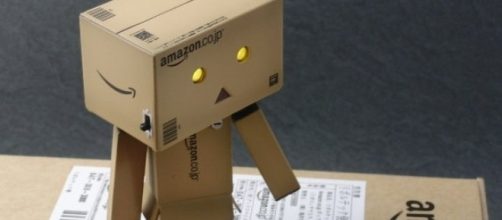It's no secret that Amazon is a company built up from innovation. They have laid the foundation upon which almost all modern online stores modeled their services, and pioneering the online store concept has got them successful, with a considerable amount of their income coming from licensing fees from those who want to use their framework.
Automated drones based on containers
Through the years, it seems that Amazon has never stopped innovating, as evidenced by the numerous patents they filed for a fully-automated Delivery System. This has been a long-time dream for the company.
While there are technical and logistical limitations to consider, that did not stop the company from filing patents — patents with ideas that are amazing in theory, with devices that look like things out of a sci-fi novel.
The Verge reported on one of these recent patents, which involve "a network of roving, intermodal delivery systems that would act both as a maintenance hub and merchandise warehouse for Amazon’s drone fleet." This apparatus is made of your conventional shipping container, with an automatic door on the ceiling. Presumably, this is where the automated drones will make their entrance and exit when they do their routine of delivering various pieces of merchandise for Amazon customers.
These containers may be the basic unit of the automated delivery proposal, but they are not the be-all-end-all of the system; nor are they self-contained. The containers can be loaded onto trailer trucks or container ships, and these vessels will have equipment that will assist in the maintenance and continued operation of the container.
There will be extra batteries and "robotic arms," all controlled by computer systems which allow individual units to communicate; containers, drones and all. If you can imagine the actual container as a base, the ships and vehicles containing these would be the mother ships.
An anticipation of need
Not only that, but the patent also proposed an algorithm wherein certain products would be forwarded to a container location where it's most likely needed.
To put It bluntly, there will be a process in place which determines, for example, the likelihood of people in Iowa needing vacuum cleaners. If the likelihood is high enough, the system will "forward-deploy" vacuum cleaners to a container closest to Iowa. This way, if someone from Iowa purchases a vacuum cleaner, the delivery time will be significantly reduced.
Only time can tell if the patent will be approved. However, it goes to show that Amazon aims to be more flexible with its delivery systems, and these innovations could be delivery models for years to come.


